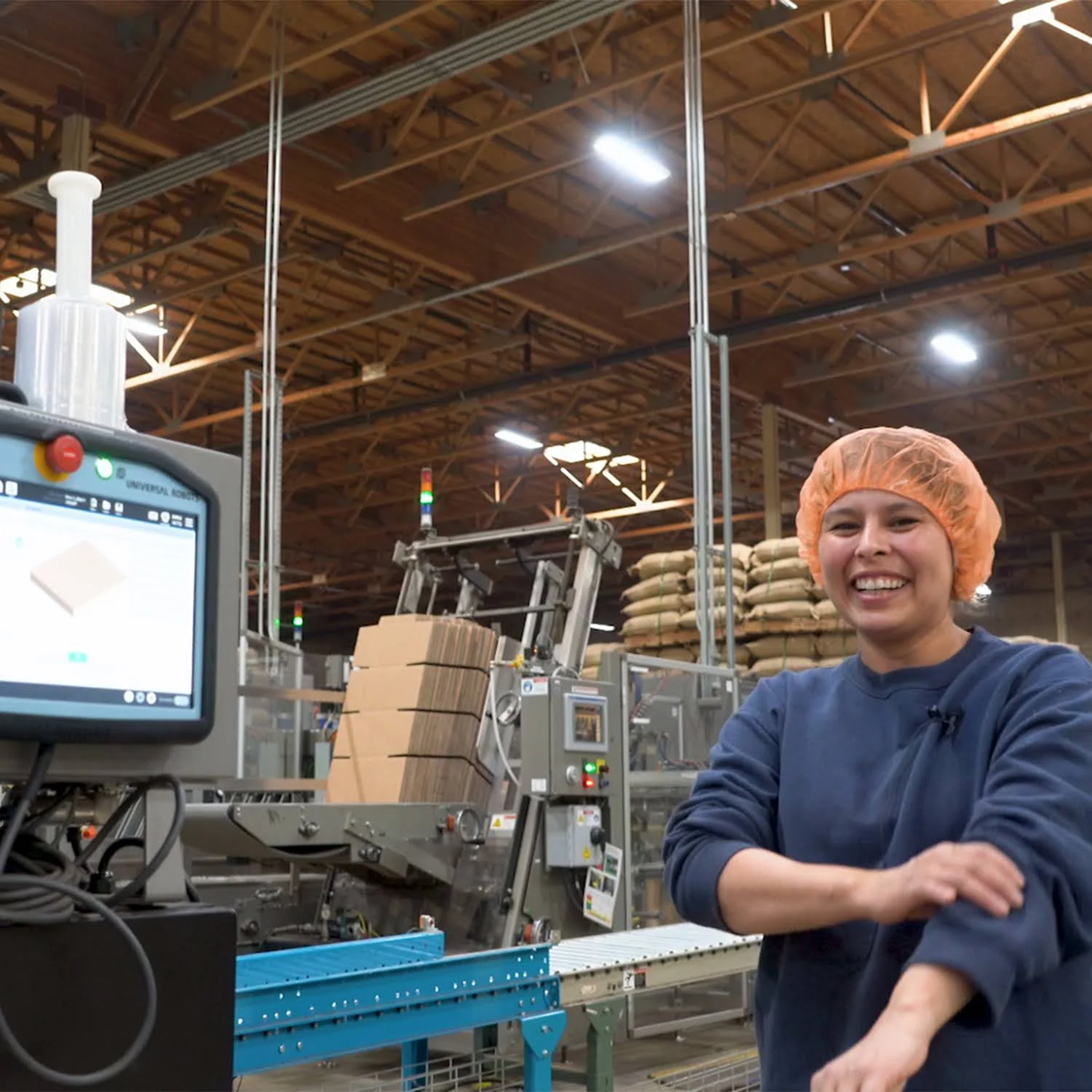5 Surprising Benefits of Palletizing Ergonomics on Employee Mental Health

Posted on Jul 18, 2023 in Palletizing
5 min read time
Ergonomics is a vital consideration in the workplace, especially for the physically demanding task of palletizing.
A poorly designed palletizing process can lead to a variety of physical injuries for employees, including back pain, slips and falls and even broken bones.
But palletizing ergonomics isn't just about employees' physical safety. It can also have some surprising benefits for employee mental health.
By improving the ergonomics of your end-of-line processes, you can reduce the number of days lost to worker injury and mental health issues.
From reducing stress and anxiety to making people's jobs more rewarding, there can be significant benefits to looking at palletizing through the lens of ergonomics.
With the right approach, you can make palletizing a valuable asset instead of a potential risk.
What is ergonomics and why is it important in the workplace
Ergonomics is the study of how people physically interact with their environment and how that affects their efficiency at work. Workers often spend long hours in their jobs, so slight changes to their environment can make a big difference to their health in the long term.
In a job with physically demanding tasks – like end-of-line packaging – ergonomics is vital. It can help reduce the risk of injury and illness among employees.
With a task like manual palletizing, there is an inherent risk of musculoskeletal disorders. These are cumulative injuries caused by the stresses on the body as the result of repetitively moving the body into awkward positions, and lifting heavy charges.

When you prioritize the ergonomics of your palletizing process and monitor the impact of your changes over time, you can significantly reduce the risks to workers.
The role of palletizing and packaging ergonomics on worker safety
Despite the apparent simplicity of palletizing, it can be a surprisingly dangerous task.
When people don't take adequate care, even pallets alone can cause injury. According to one study, an astounding 30,493 people were sent to the emergency room for injuries involving pallets in homes and retail locations, between 2014 and 2028 only.
These were consumer-related injuries, in environments where people can avoid interacting with pallets. When your work involves interacting with pallets, you can't avoid them.
There are various causes of this danger including:
-
Pallets and their loads can be heavy when stacked. Any instability can cause heavy items to fall on people.
-
Loading and unloading pallets involves stretching and bending to reach items from multiple angles and sides, causing people to put their bodies into unsafe positions.
- Lifting heavy objects is one of the most common risks in any job, which is common in palletizing.
When you are designing a palletizing process, you can reduce the danger to employees by considering ergonomics throughout.
The risks associated with improper pallet handling
Pallet handling is part of the jobs [of over 1.3 million people in warehouses and storage environments in the USA alone.
When workers improperly handle pallets, it can lead to a wide variety of injuries.
Back injuries are probably the most common injury. They can occur because of the repetitive motions of palletizing, including lifting, pulling, pushing, and carrying heavy boxes. Back injuries can be mild – such as slight muscle strains – or severe enough to end a person's working life.
Slips and falls are another common hazard associated with pallet handling. A slippery floor can lead to a serious accident, especially when workers rush between tasks because of a lack of time.
All physical injuries can harm a worker's mental health. Whether they are forced to take days off work or struggle to complete their job efficiently, the injury can affect how they feel about themselves and their jobs for a long time.
5 surprising benefits of palletizing ergonomics on employee mental health
You might not expect it, but better workplace ergonomics can improve employee mental health.
Here's how better palletizing ergonomics can affect mental health:
1. Reduced stress and anxiety
Poor ergonomics can lead to fatigue and physical strain for workers, which makes their jobs more stressful. Even if injury doesn't affect their productivity, these low spirits can.
A focus on palletizing ergonomics can help workers to feel less stressed and anxious.
2. Improved mood and energy levels
Palletizing is a dull and repetitive task. It can become very tiresome for workers, harming their mood at work and reducing their energy and drive to succeed.
An effective solution for improving palletizing ergonomics is to add a palletizing robot. This can lead to improved mood and energy levels, and more motivation to work. We've recently presented such an example in our latest case study about Cascade Coffee.
3. Enhanced focus and productivity
When combined with palletizing automation, ergonomics can help employees stay more focused and productive in their work.
By reducing the repetitive motions associated with palletizing, you improve the intellectual stimulation of people's jobs so they are more likely to engage with their work.
4. Fewer days taken off work
We have spoken before about how robotic automation helps to reduce the 35% of sick days associated with musculoskeletal disorders.
Making your palletizing process more ergonomic also allows you to reduce the workdays lost to injury and decrease employee healthcare costs.
5. Improved job satisfaction and lower turnover
When you make people's jobs safer and less boring, you also help to increase their job satisfaction.
This improvement also means that people are less likely to leave their jobs, reducing the problems of employee turnover.

How to minimize risk with robotic palletizing solutions
What's the best way to reduce the ergonomics problems associated with manual palletizing?
While there are many steps you can take, one of the most effective is to remove the task of manual palletizing entirely from the hands of your workers.
By using a good robotic palletizing solution, you can move people to even more rewarding tasks in their job, improve palletizing consistency, and almost eliminate the potential mental health problems caused by manual palletizing.
What do the workers in your business feel about palletizing tasks? Tell us in the comments below or join the discussion on LinkedIn, Twitter, or Facebook.





Leave a comment